|
We are on our last stretch, making our way toward Saigon, a.k.a. Ho Chi Minh City. Bus travel, we have found, is exceedingly easy, other than for the fact that it’s best not to look at the road ahead because of the frequent game of chicken played between large trucks and buses.
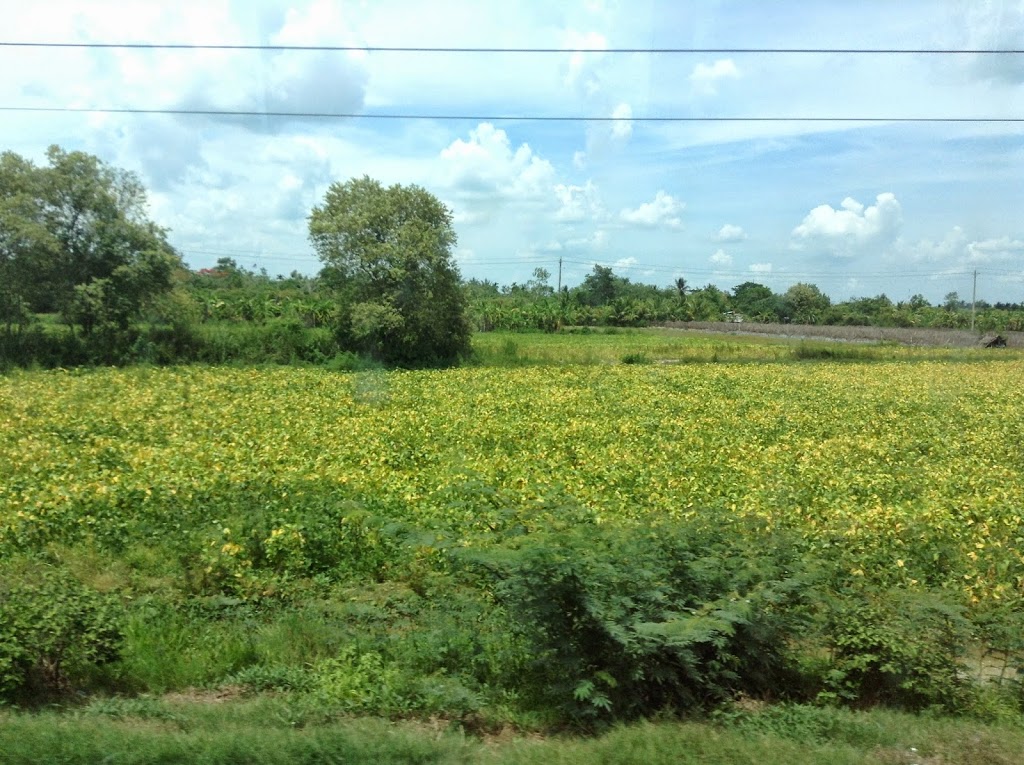
|
| View from the bus on the way from Can Tho in the Mekong Delta, to Saigon. |
After the smaller towns we have been in recently, Saigon is a bit of a culture shock. Even CanTho, a provincial city in its own right, seems quaint in retrospect. The predominant first impression: motorcycles EVERYWHERE.
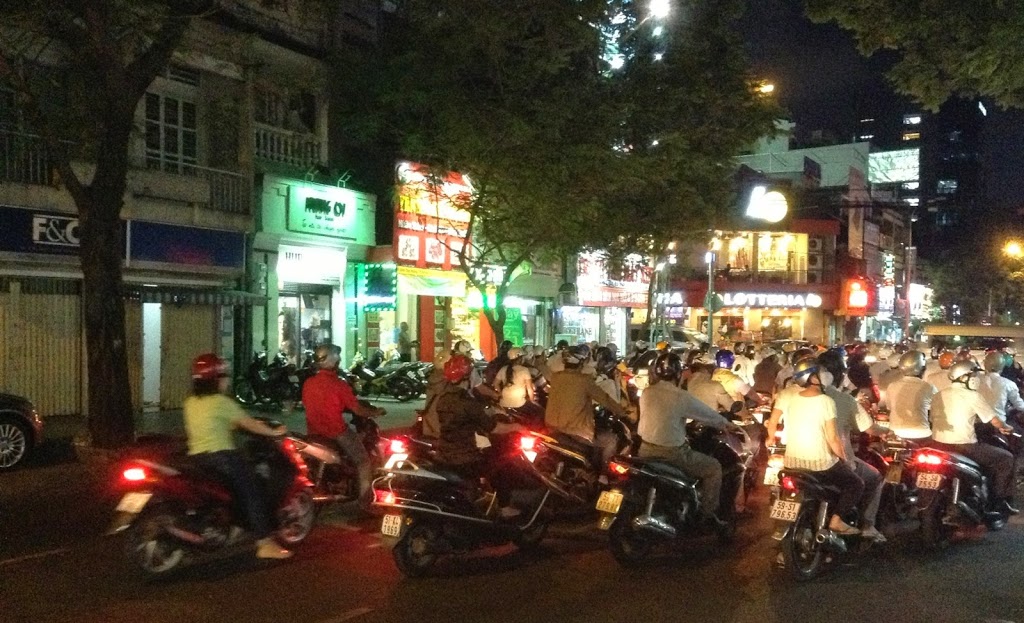 |
| Saigon, aka Ho Chi Minh City is a city infamous for the domination of streets by an unending stream of motorcycles. |
There are multiple ways one can seek to discover Saigon. Adam’s way, of course, is through its dishes. Peta and I want to understand more of Saigon’s history, and it seems that there are at least 3 different tacks. One can peel through the history by discovering vestiges from the French 100 year or so period of colonial presence. What’s left are city buildings everywhere and the occasional grand architectural pieces. For instance, the wink at Paris’ Notre Dame Cathedral, and a replica of one of Paris’s four grand train stations…
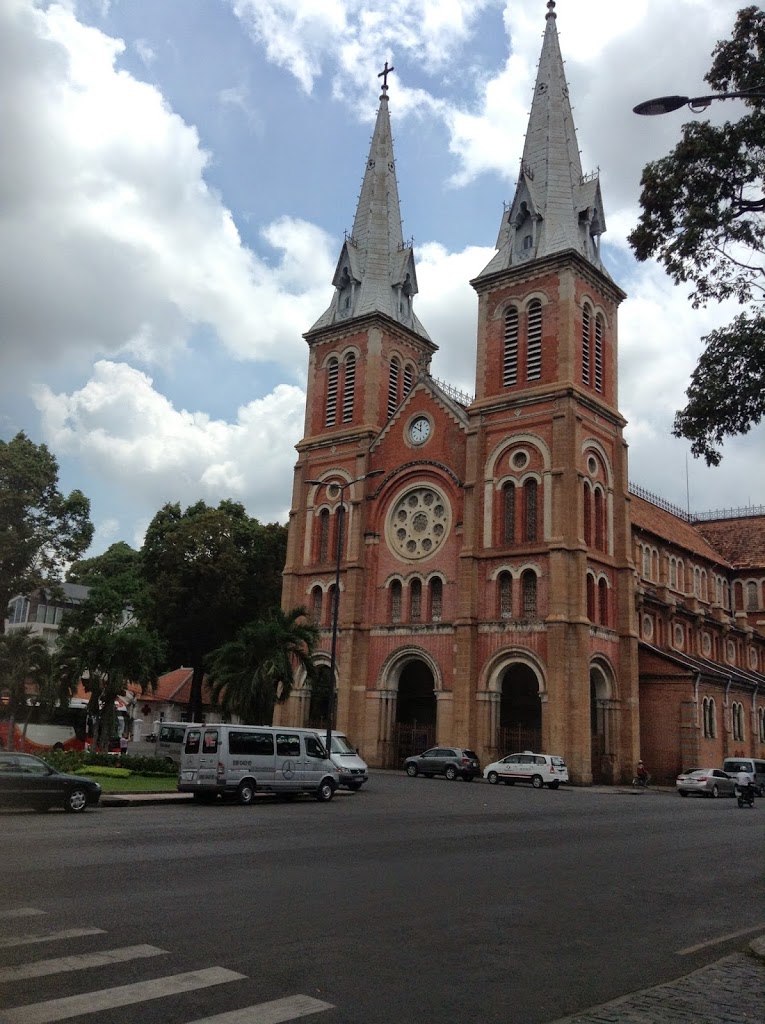 |
| Notre Dame Cathedral in Saigon. |
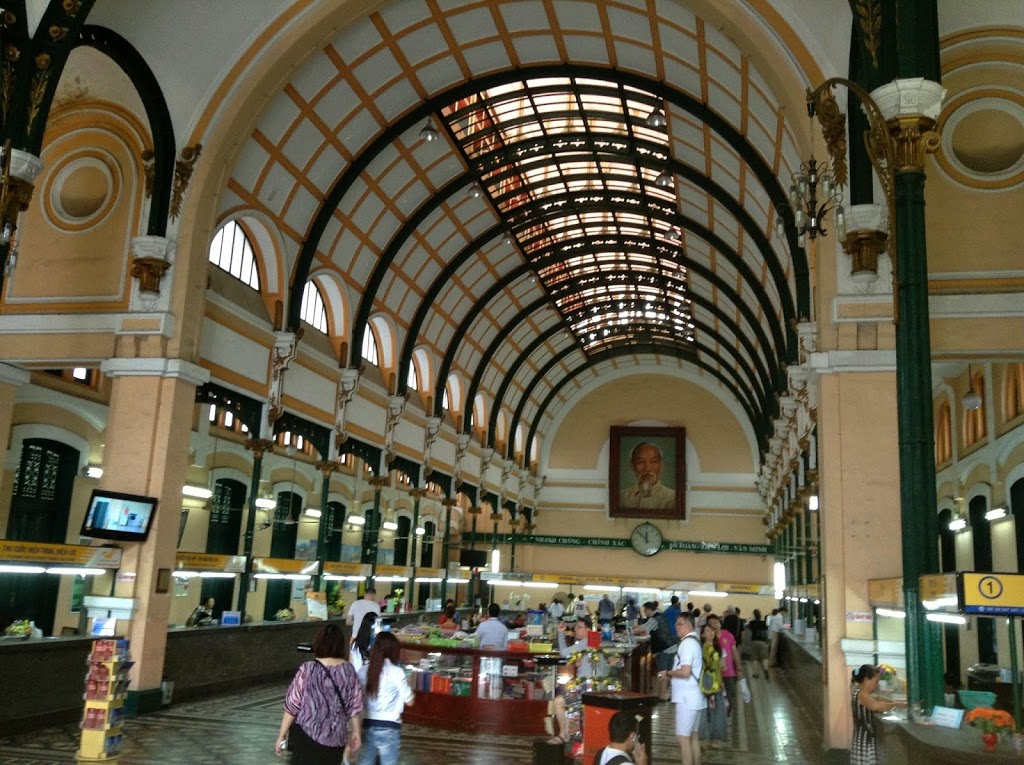 |
| French built train station. |
Another way to look at Saigon is to focus on the American War. This is frankly a much harsher approach, best evidenced by the War Remnants Museum. NEVER, have we seen such a graphic display of war. Perhaps it is because of the direct, non-censored approach. Some might look at the museum and say it’s because of the “propaganda” approach of the Communist government. But propaganda, typically, is about something that is not accurate, or is amplified.
This museum is primarily a collection of photographs. Realistic, uncensored and very tragic photographs, which we selected not to reflect in our blog… The effect of Agent Orange, which is known as a practice of the U.S. military to defoliate Vietnamese forests in search of enemy combatants. But we had no visual understanding of just how hideous this chemical was in terms of its results, not just in the immediacy and in the theater of war, but in the entire country and for decades to follow. Agent Orange infiltrates the system and demolishes normal genetic patterns, so that when seemingly healthy Vietnamese, years after the war, had children… the results were monstruous deformities. Enough said… Heart wrenching.
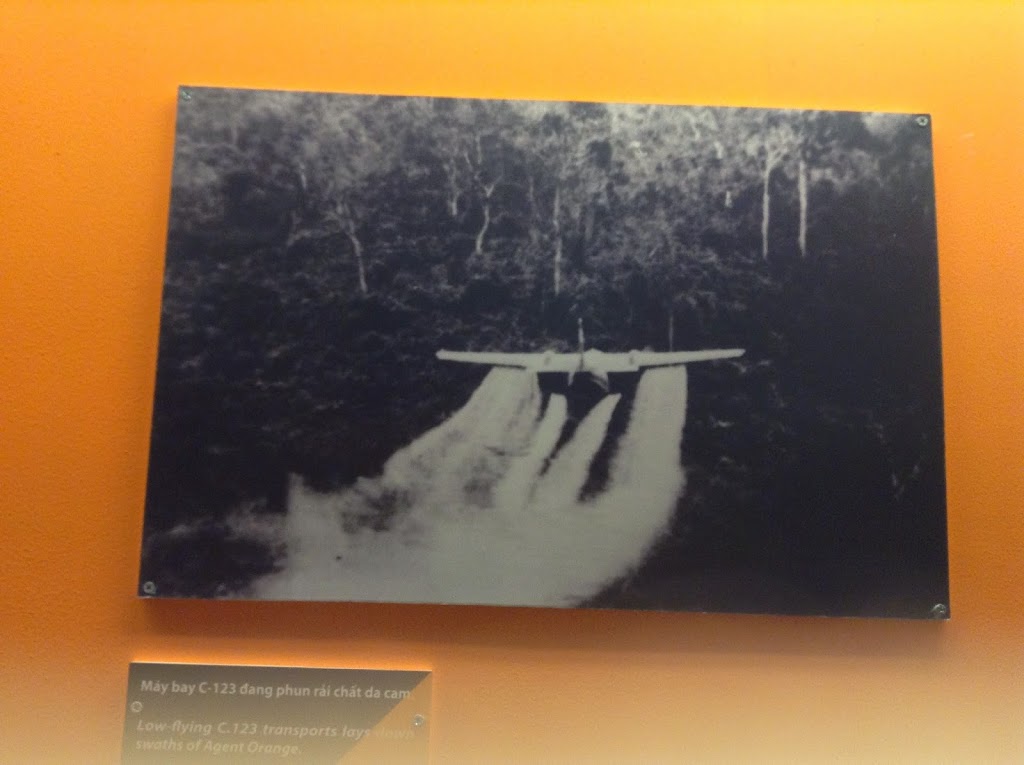 |
| A photo of an American plane spraying Agent Orange from its base in Saigon. |
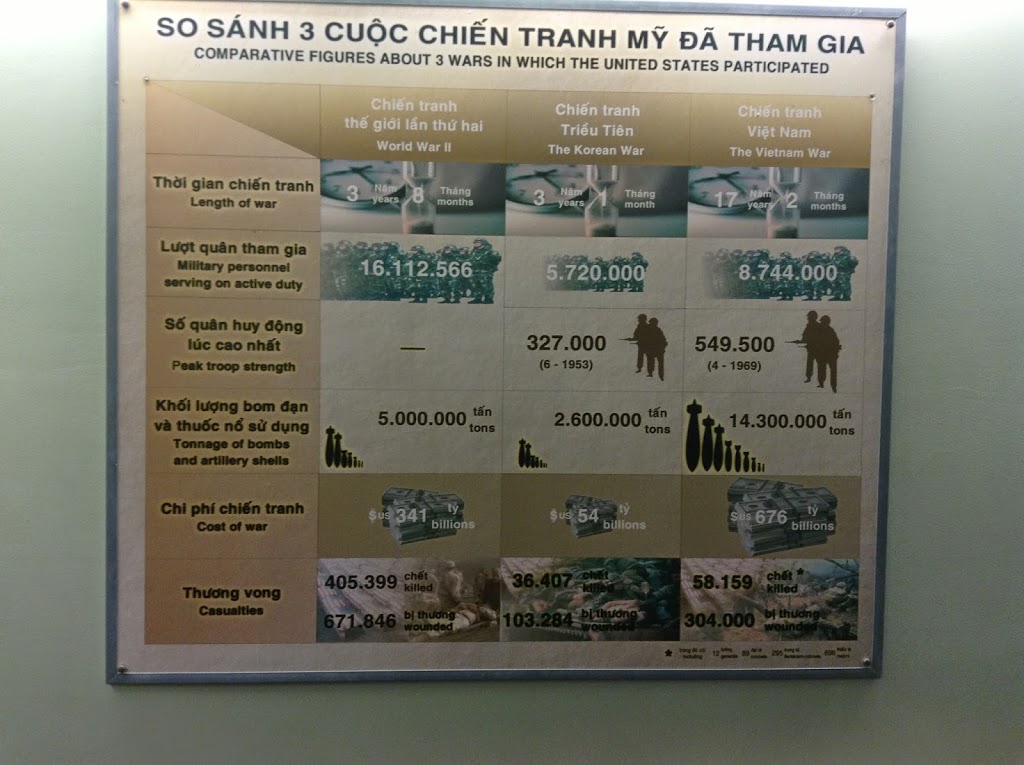 |
| A comparison of World War 2, Korean War and American War in terms of US troop commitment and statistics connected with the wars. |
OK, time to change gear and return to more pleasant aspects of Saigon, its street life and the markets…
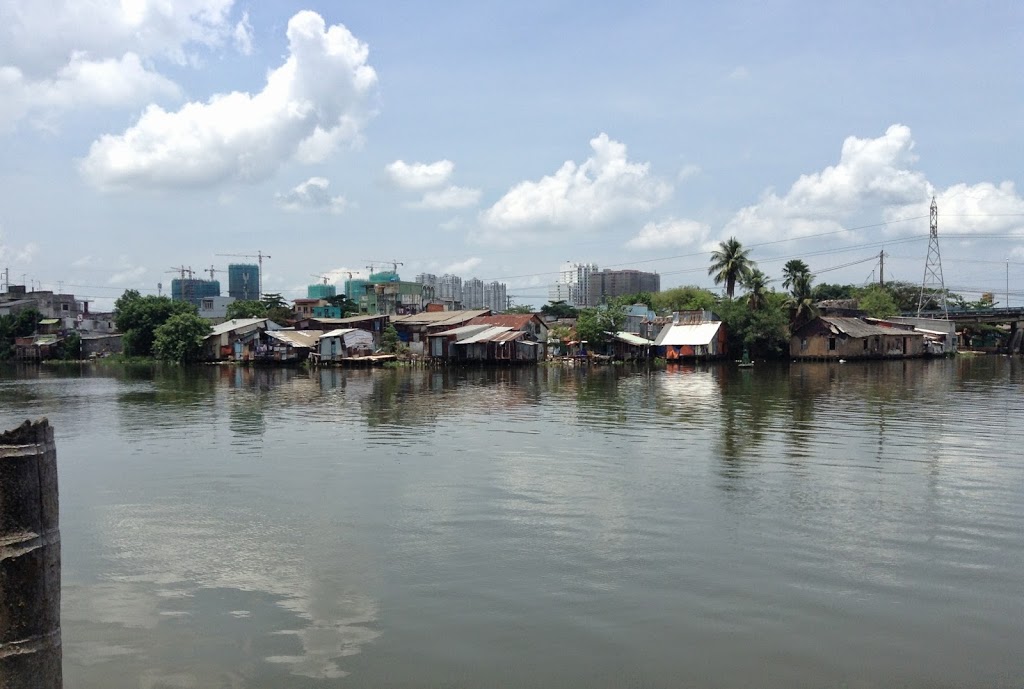 |
| One of the many rivers, with small housing at its edge and the city behind. |
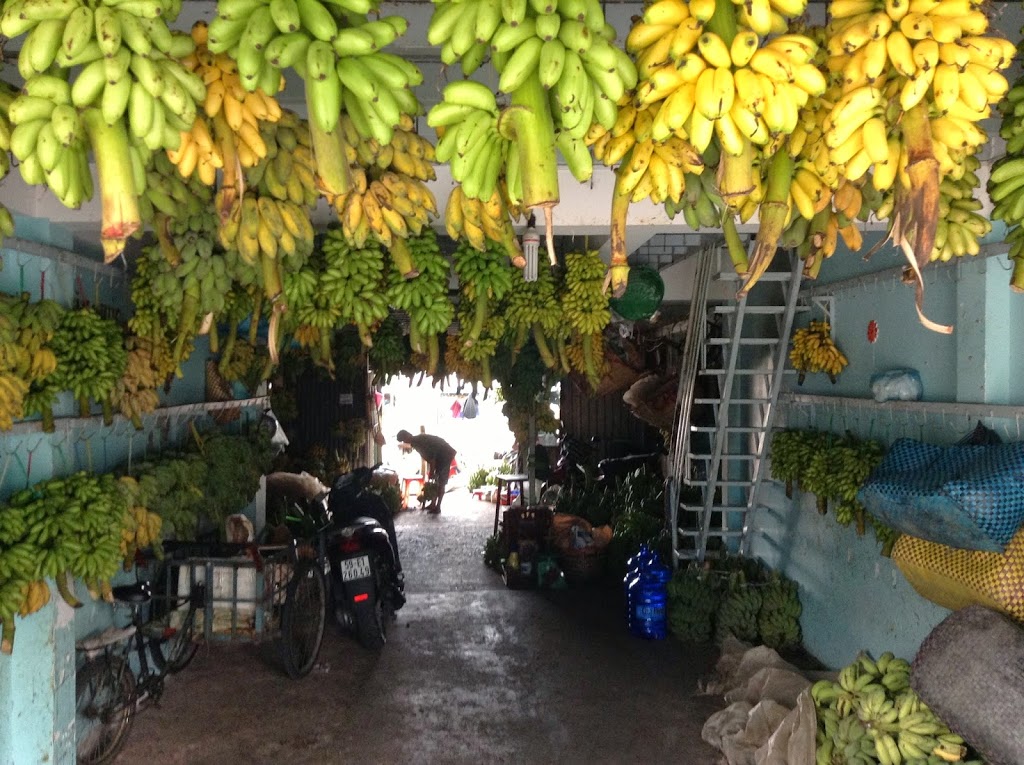 |
| One of multiple fruit warehouses which line the river and continue to depend on boat deliveries to feed the population of Saigon. |
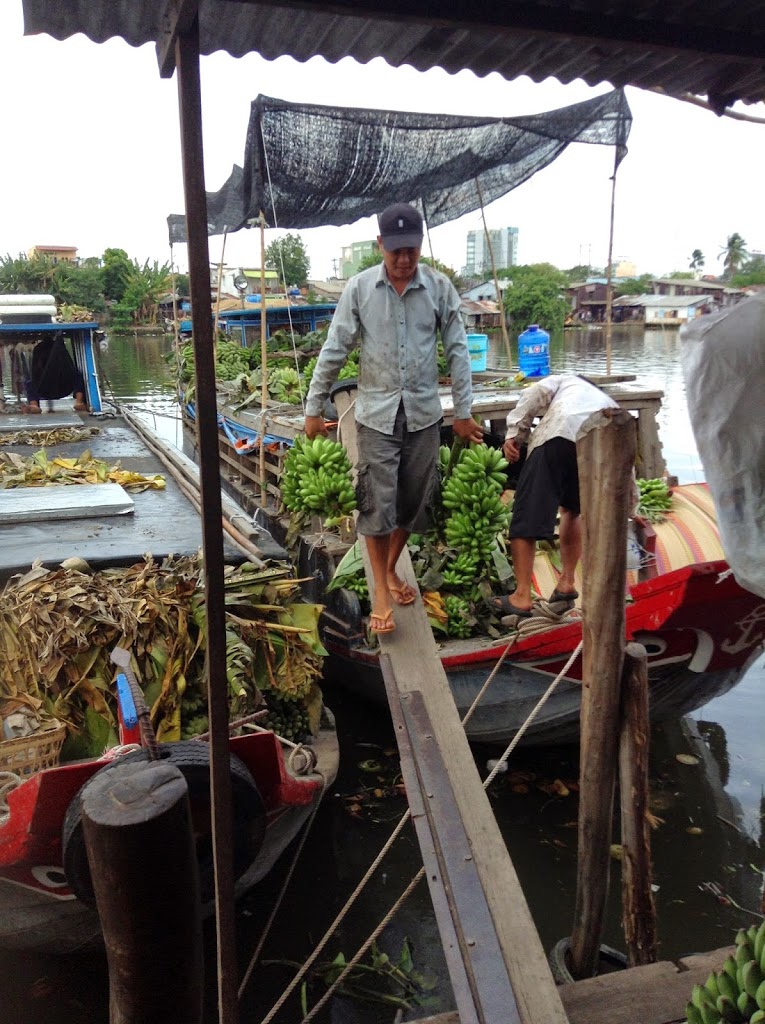 |
| A man walks the “gang plank” with bunches of bananas from the incoming delivery boat. |
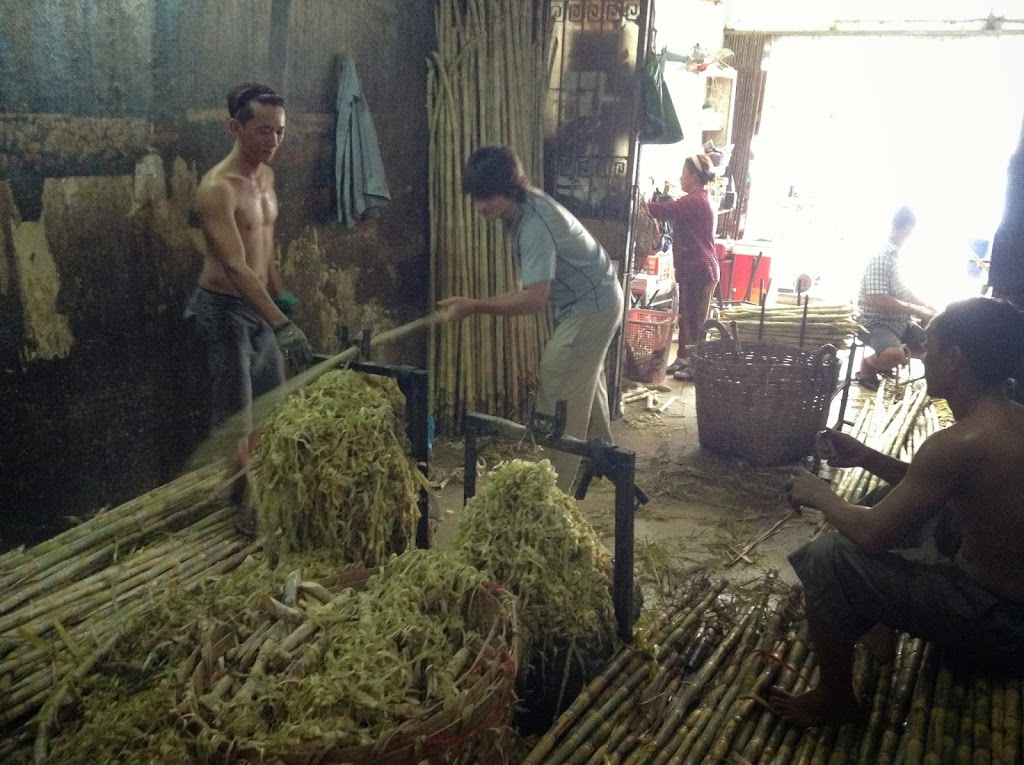 |
| A small sugar cane processing warehouse. Adam tries his hand at cleaning the sugar cane. |
The third way to “see” Saigon, is through the prism of its Chinese heritage.
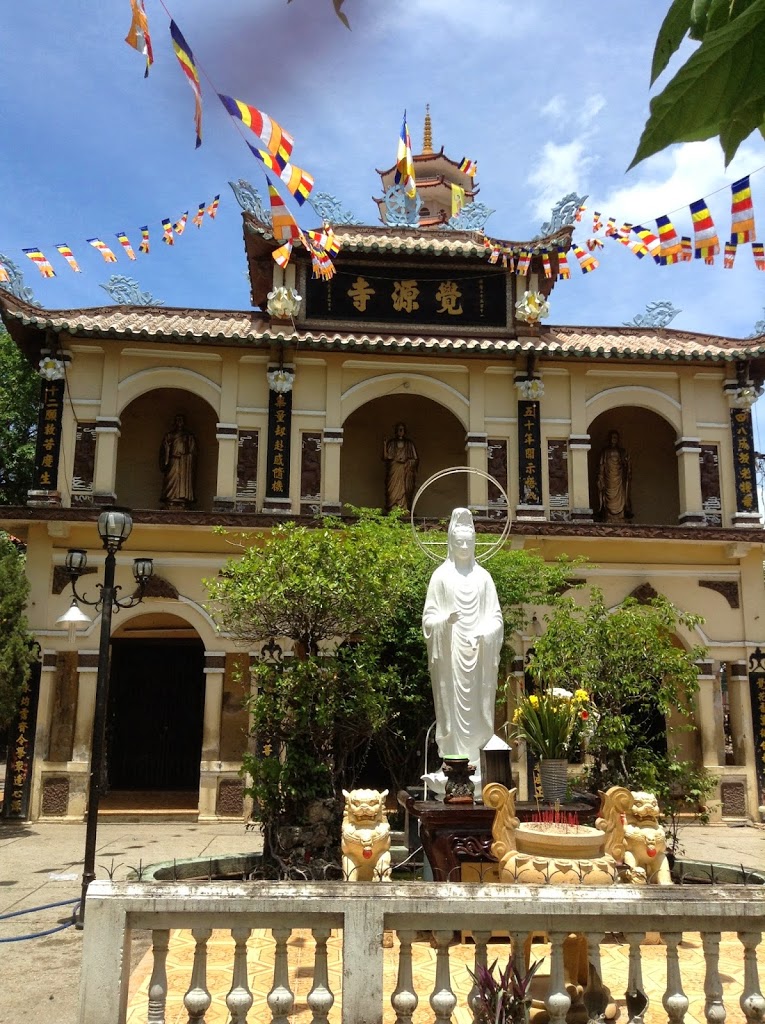 |
| A small pagoda in central Saigon. |
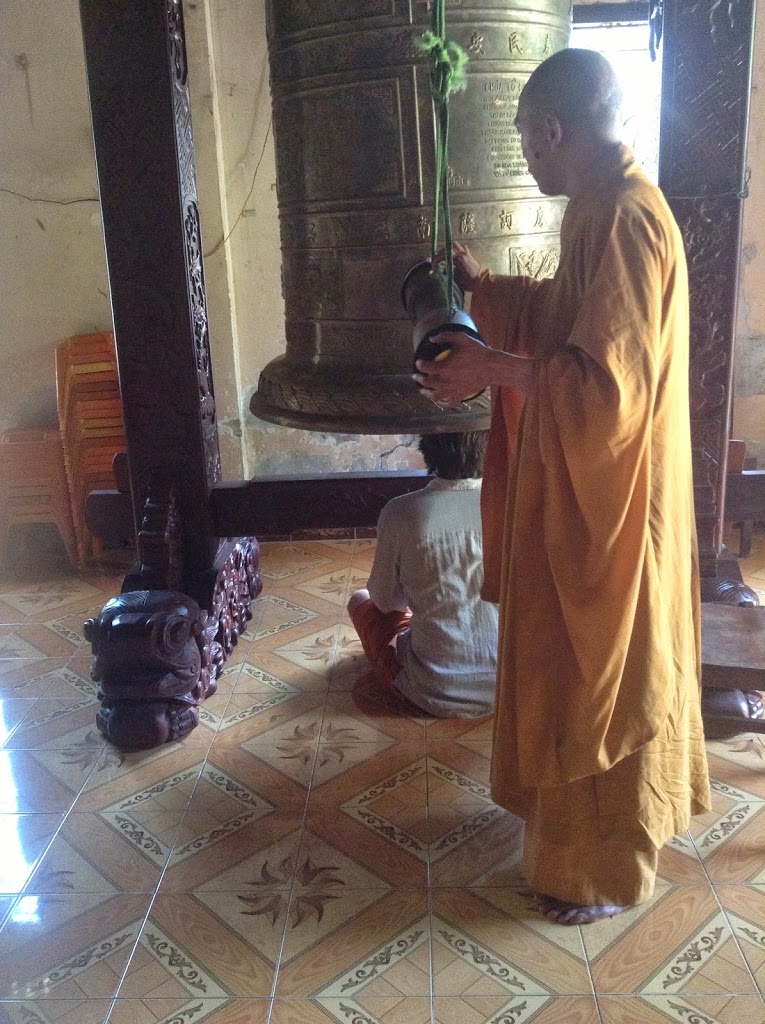 |
| A resident monk invites us to receive the vibrations from the ringing of the huge bell in the pagoda. |
Great timing, as we walk into the pagoda, a resident monk invites us to experience the vibrations of the enormous bell he is in the process of striking… by sitting directly under it! Very interesting that, while it is a bell, it is rung, or rather “struck” more like a gong. The sound reverberating is extremely loud and the vibrations are beautiful, particularly from underneath.
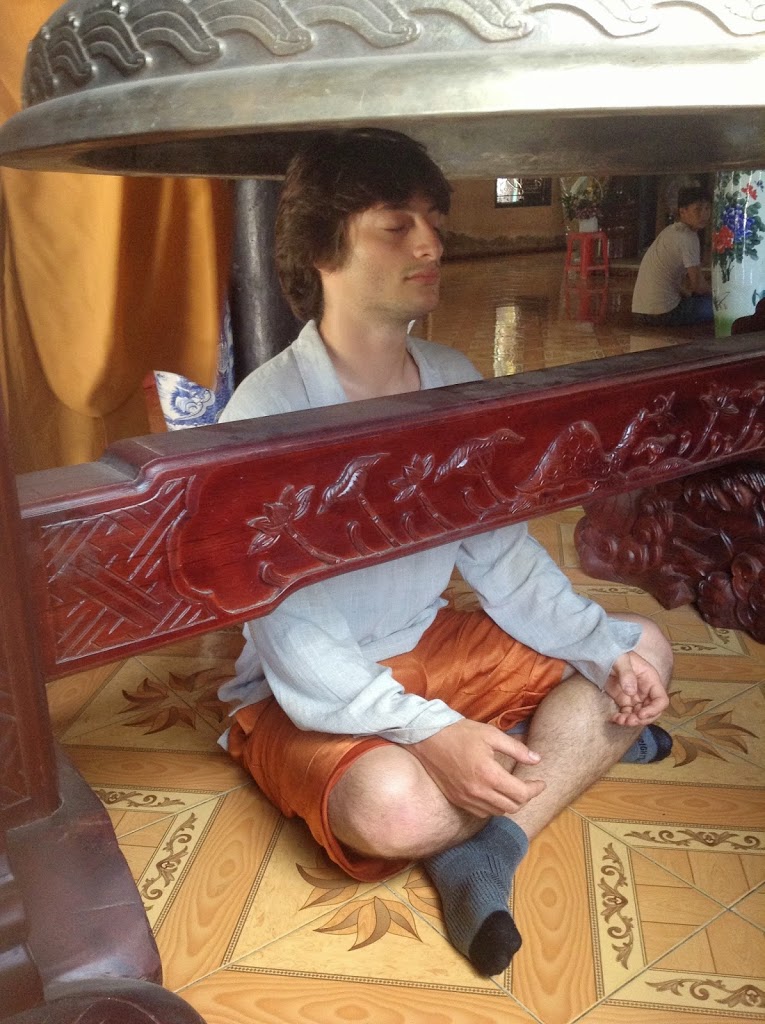 |
| Calming effect of being under the huge bell, to get the benefit of the strongest vibrations. |
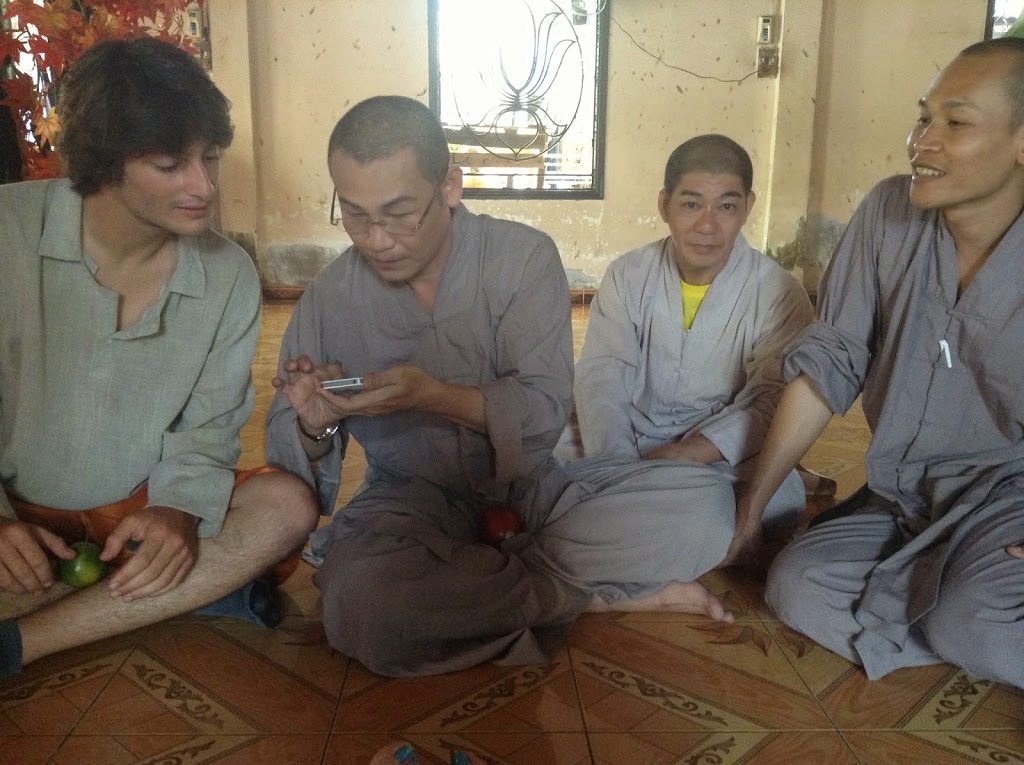 |
| Adam and monks, exchanging social media information. |
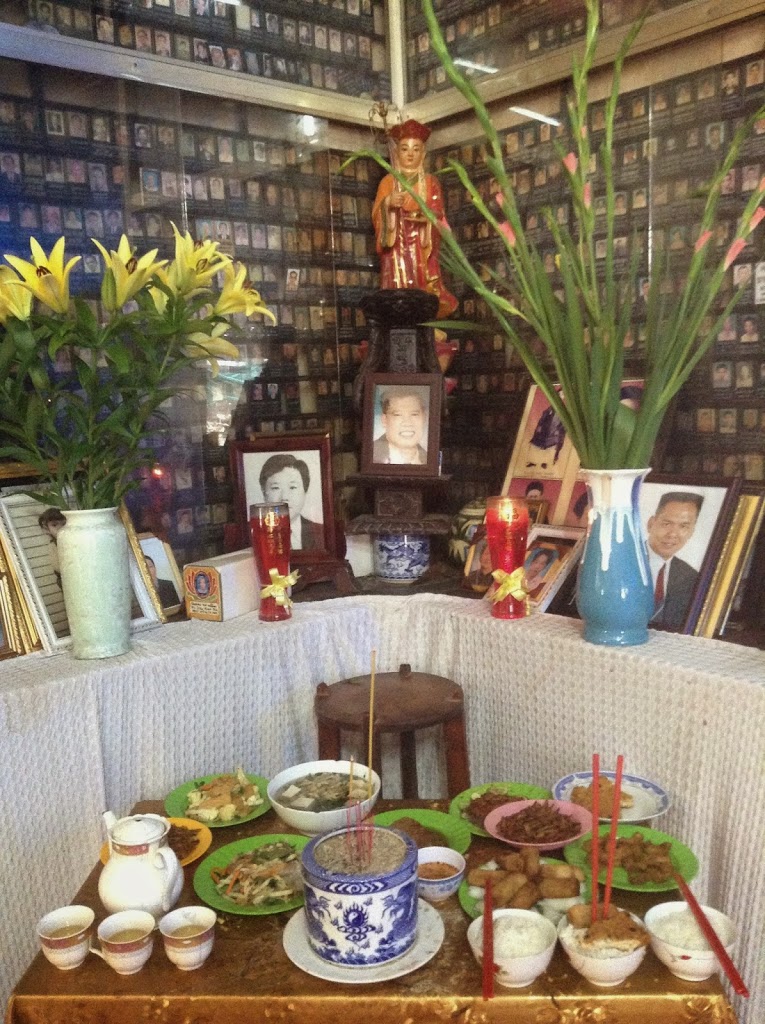 |
| A corner of ancestors including the offering of food to make sure the ancestors don’t get hungry. |
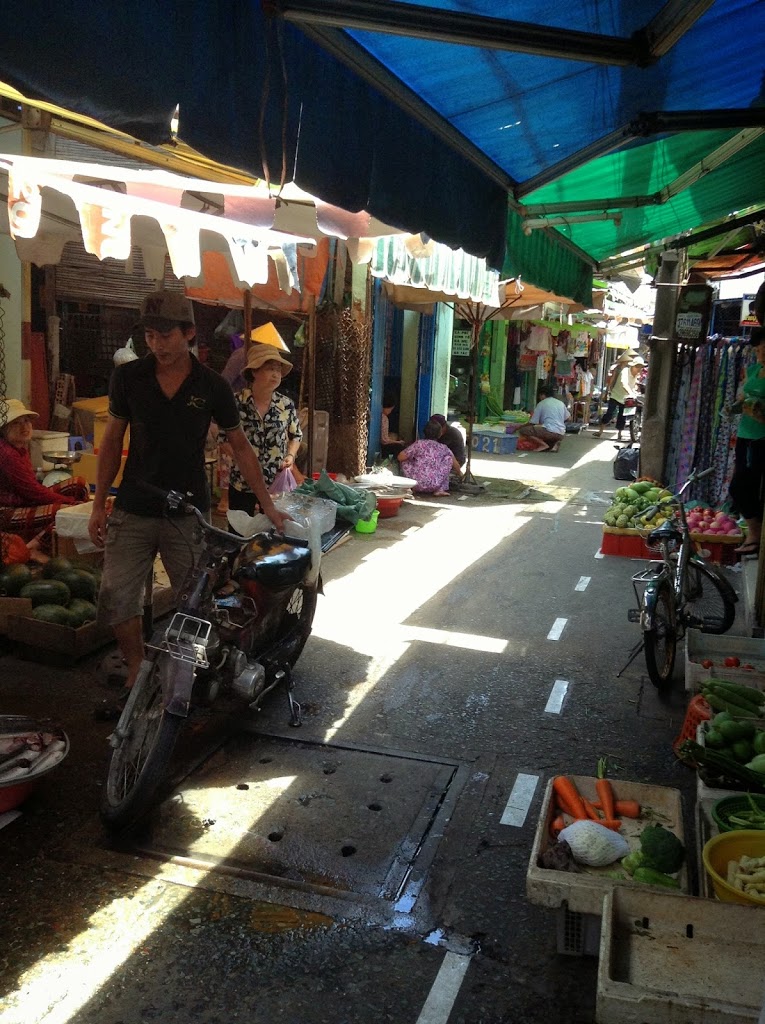 |
| Walking through the narrow alleyways in District 4. |
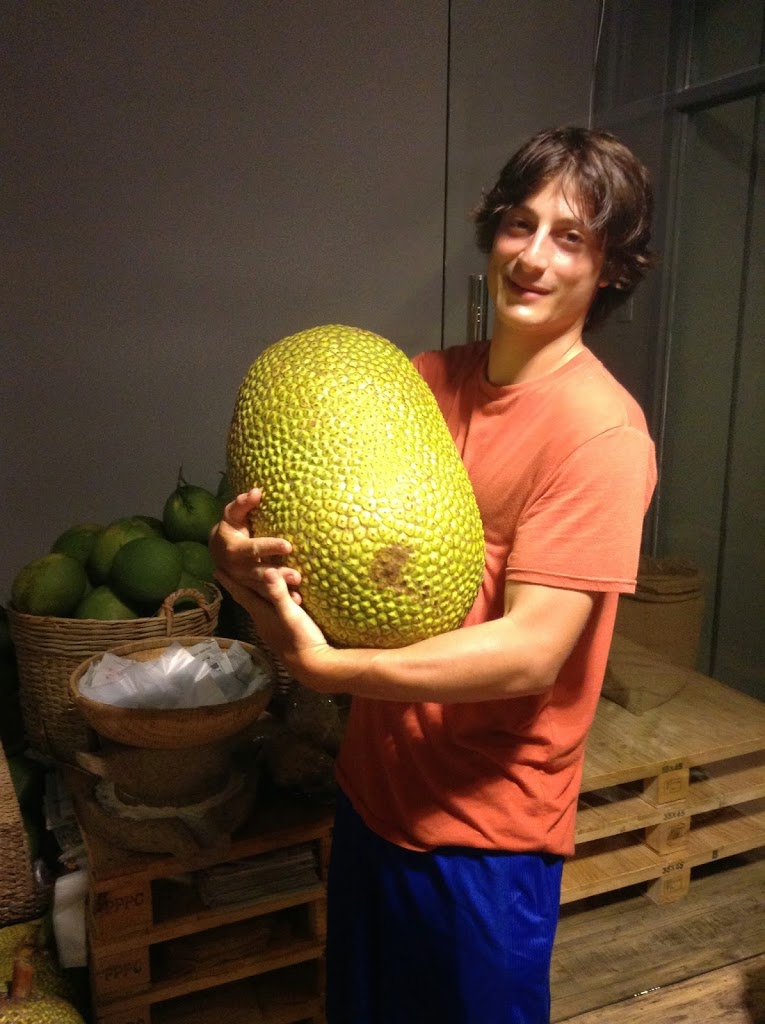 |
| A super sized, super heavy jack fruit. |
Of course, when possible, the best is to get glimpses of Viet Nams’ own history, without the French, the U.S. or the earlier Chinese influences. And this is best done by visiting the Herbal Medicine FITO Museum, a gem of an archive of ancient Vietnamese medicinal practices.
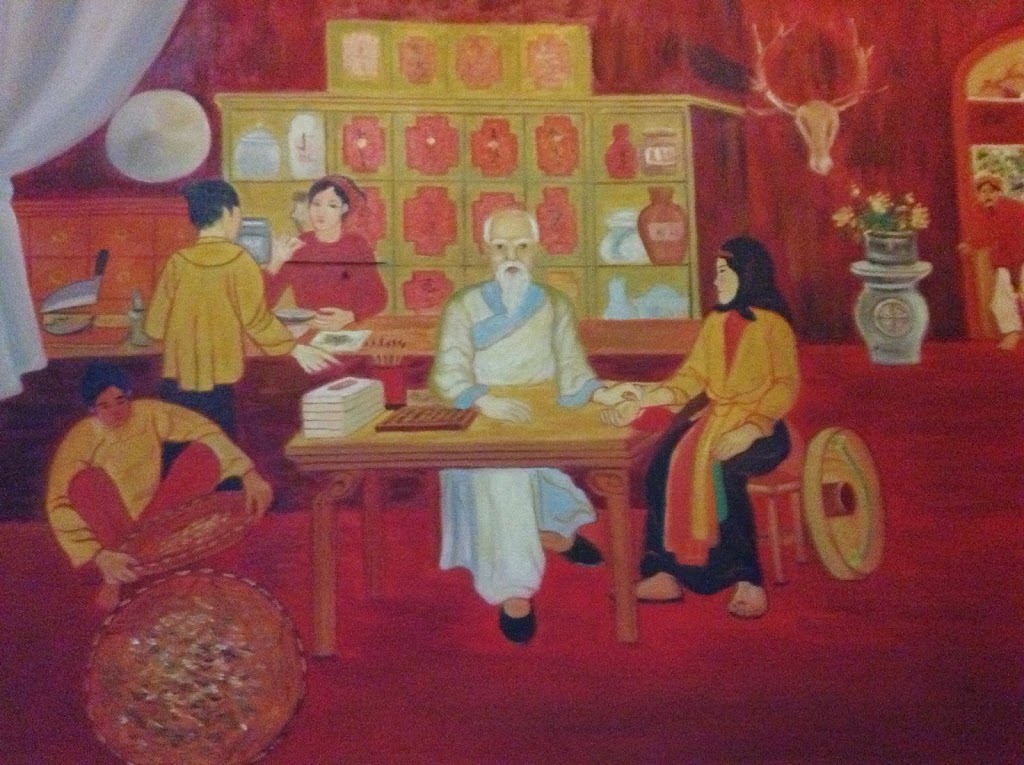 |
| A painting of a herbal medicine doctor assessing a woman’s health from her pulse and appearance. |
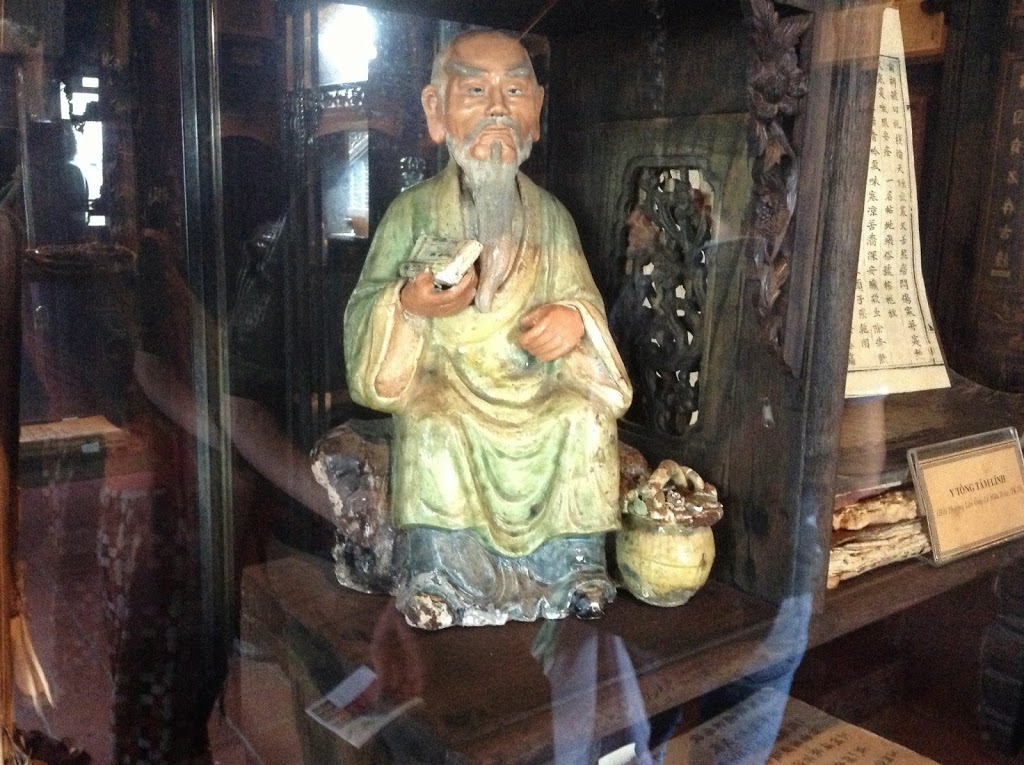 |
| Small ceramic statue of Vietnamese traditional herb doctor. |
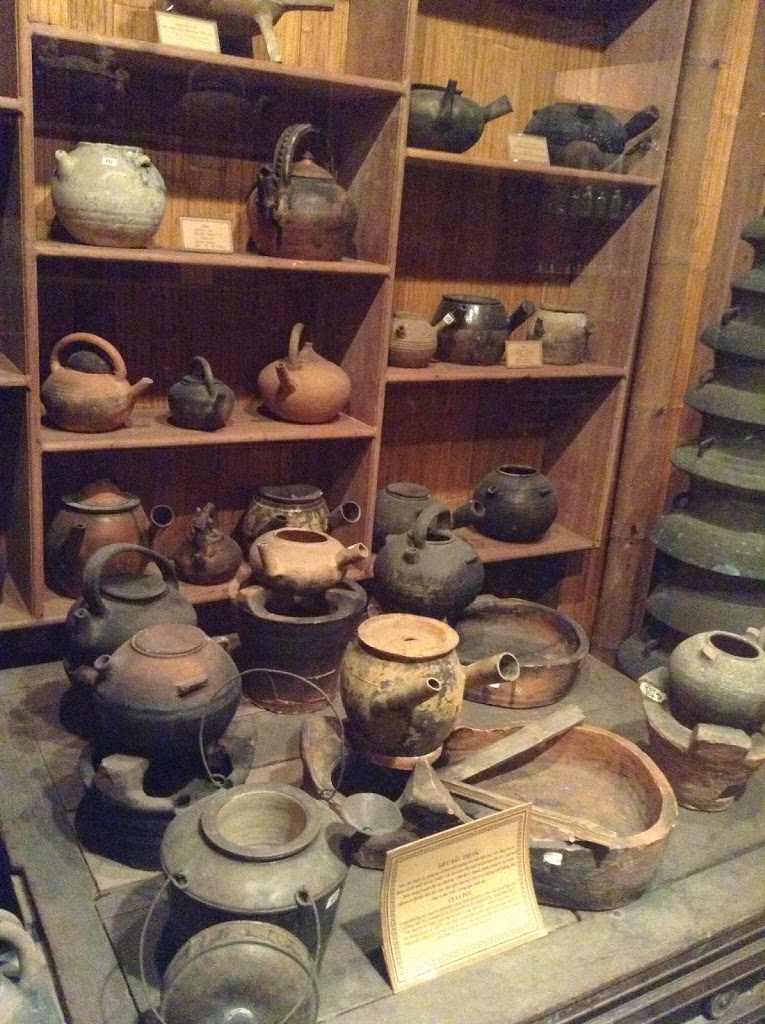 |
| The Fito Museum in Saigon houses an excellent collection of old tea pots and tea storage containers, used for medicinal herbal teas. |
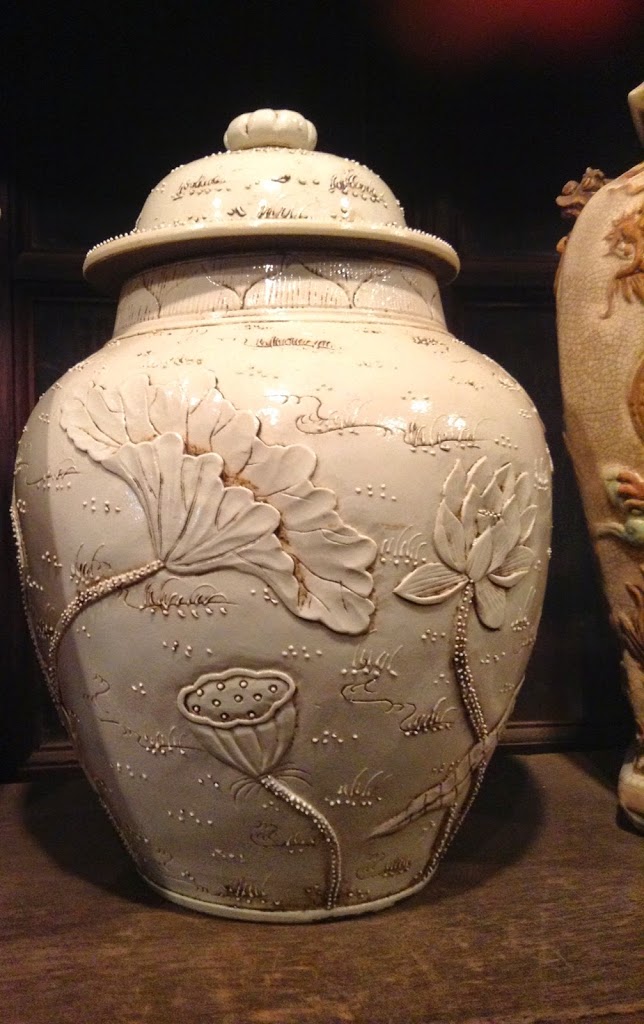 |
| Very large ceramic jar for storing dried herbs and teas. The lotus flower, decorating the urn, has many healing properties. |
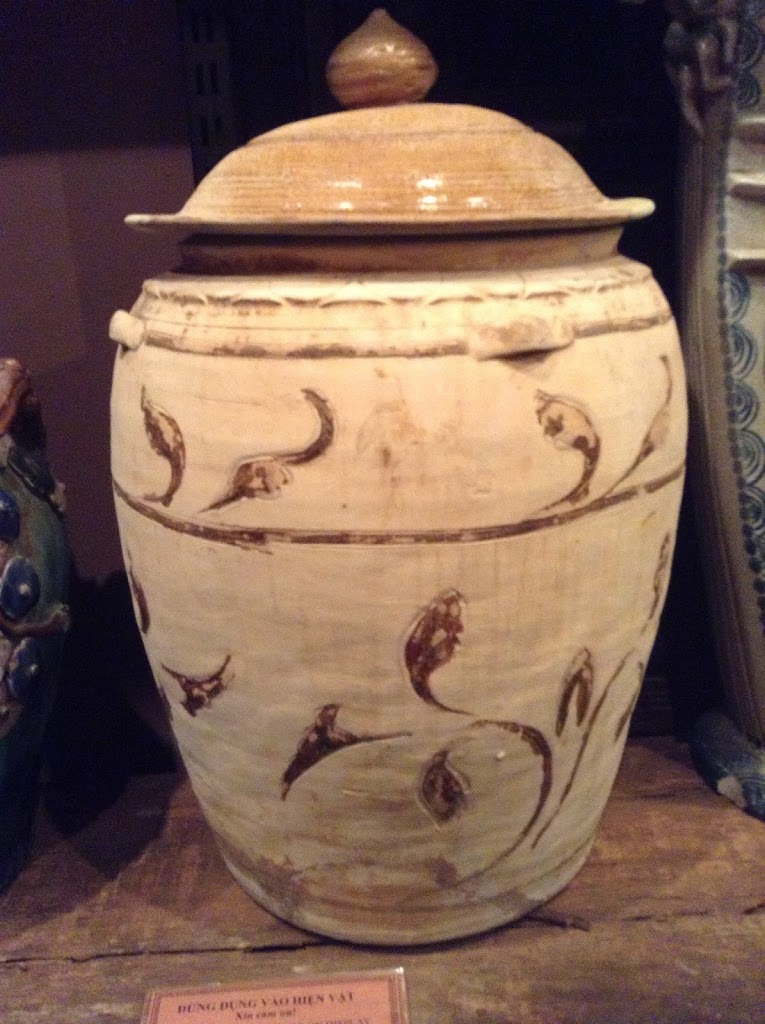 |
| Ceramic jar of about 3 foot high, for storing herbal medicines. |
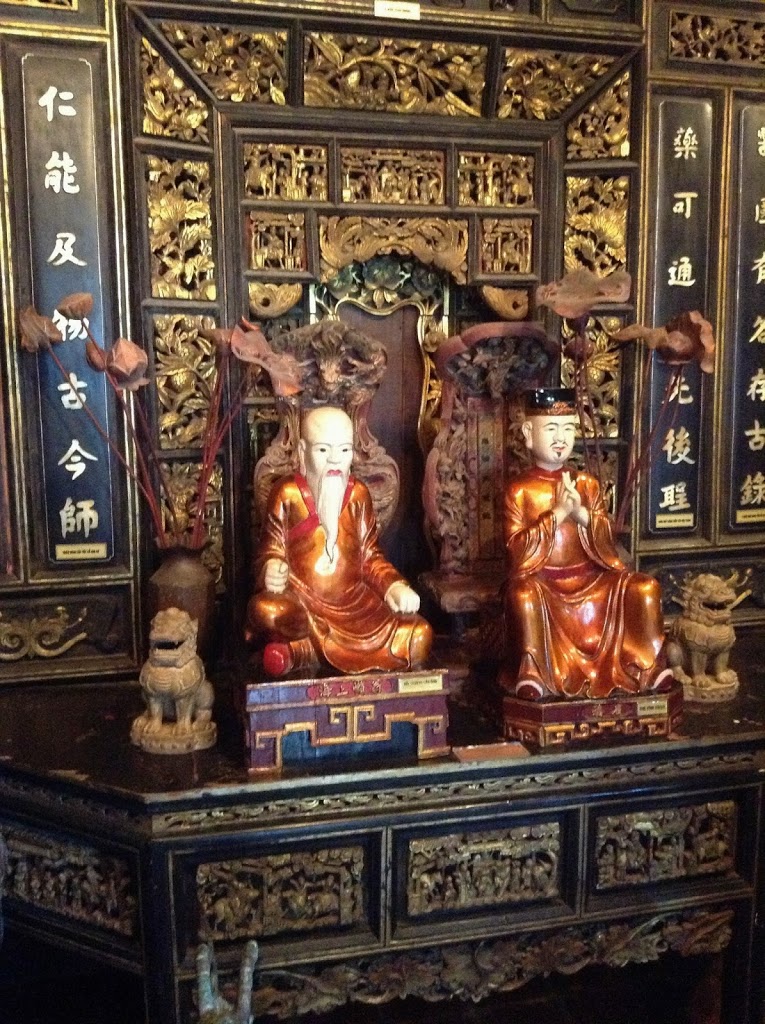 |
| The two most significant Vietnamese doctors who 700 years ago wrote the largest ever (and still authoritative), encyclopedia of over 5,000 distinct Vietnamese herbs, bark, plants, flowers and their impact on the human body. |
Final sights in Saigon… a shocking pink church… and, of course, one last scrumptious bite…
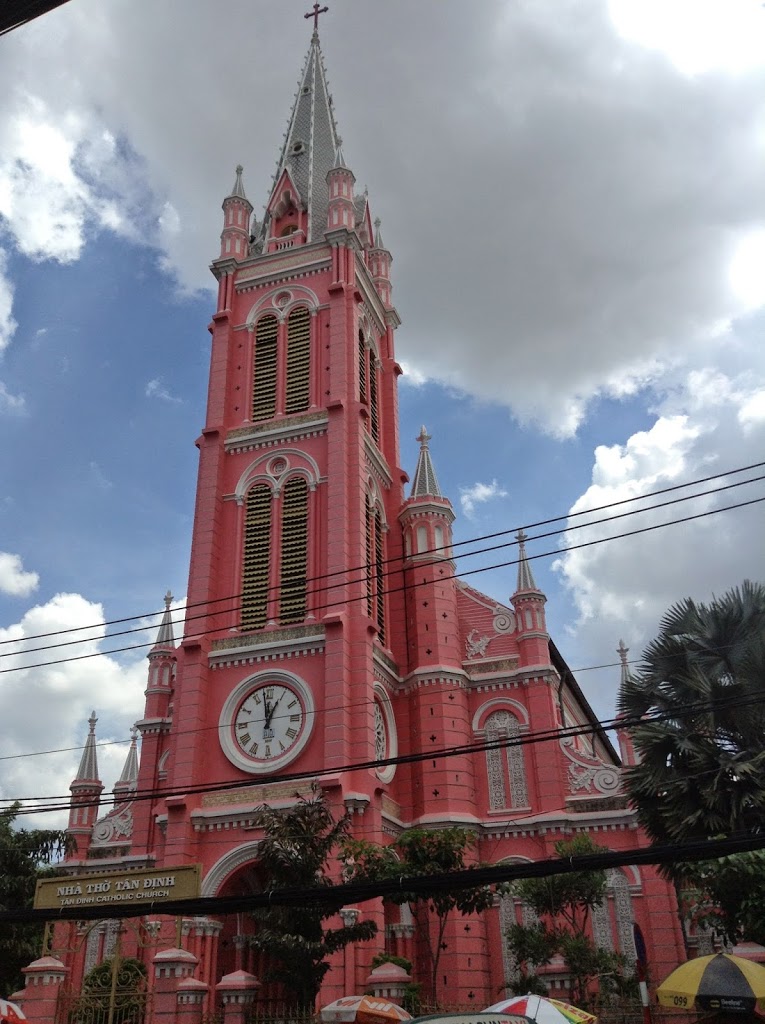 |
| A shocking pink church in the center of Saigon. |
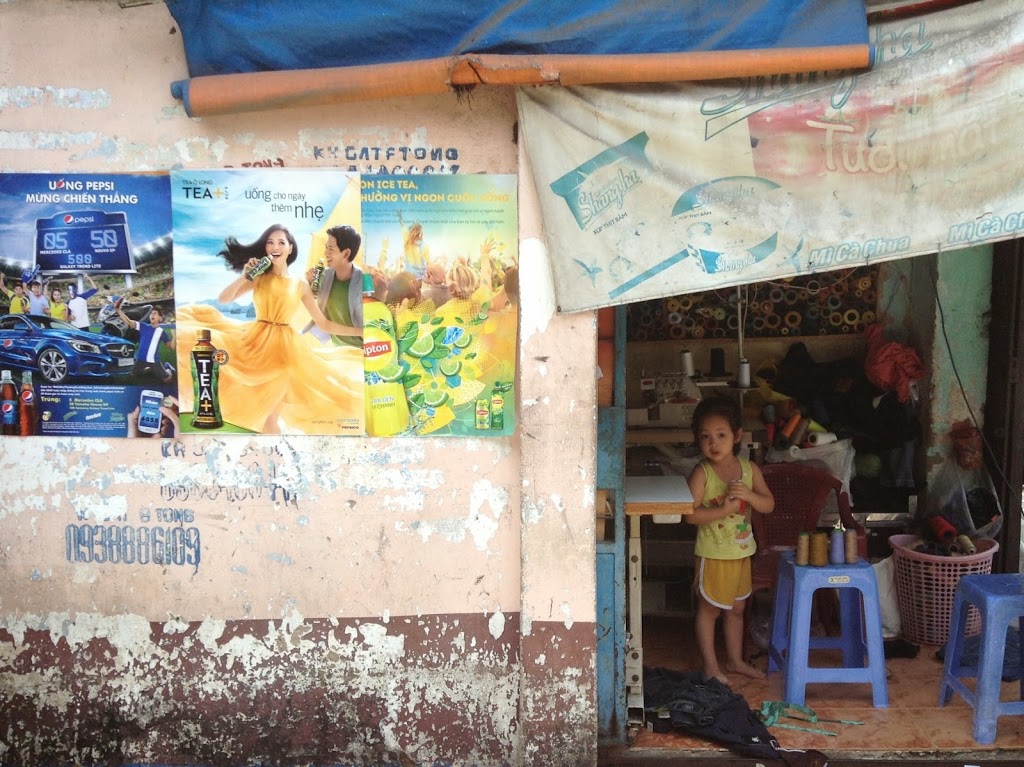 |
| A little girl keeps herself occupied in her mother’s sewing workshop. |
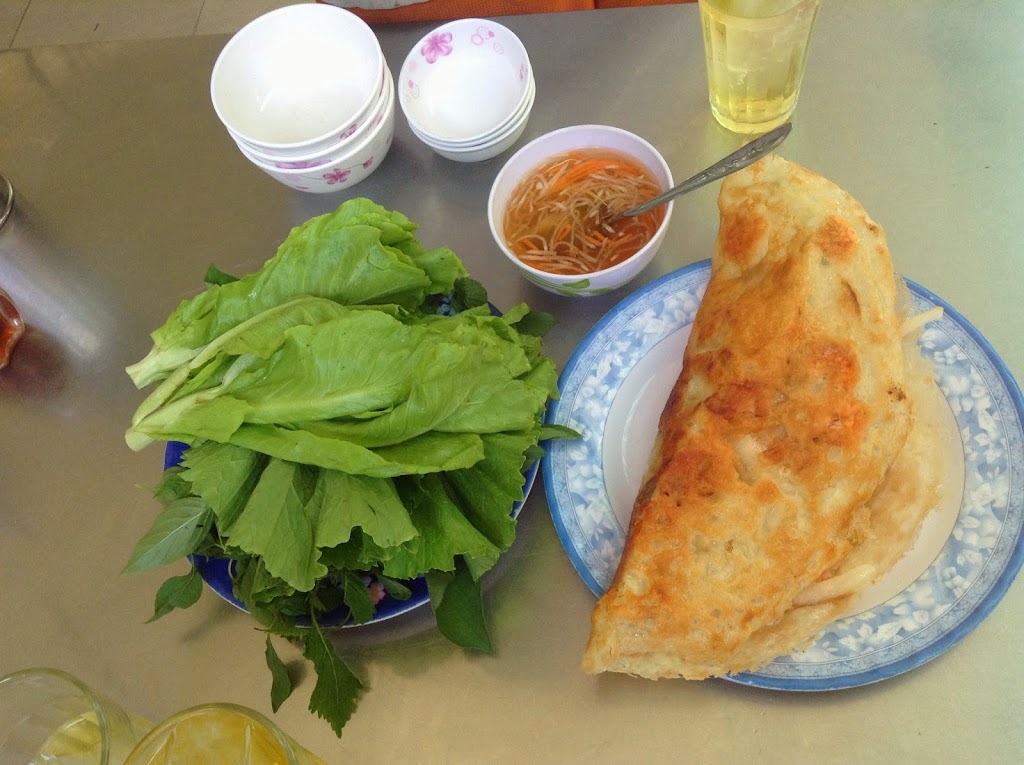 |
| Saigon style (ie much larger) Ban Xeo. Vietnamese crispy pancakes. Similar to what you can find in U.S. Vietnamese restaurants. However, we prefer the smaller, crispier ban xeo found in Central and Northern Viet Nam. |
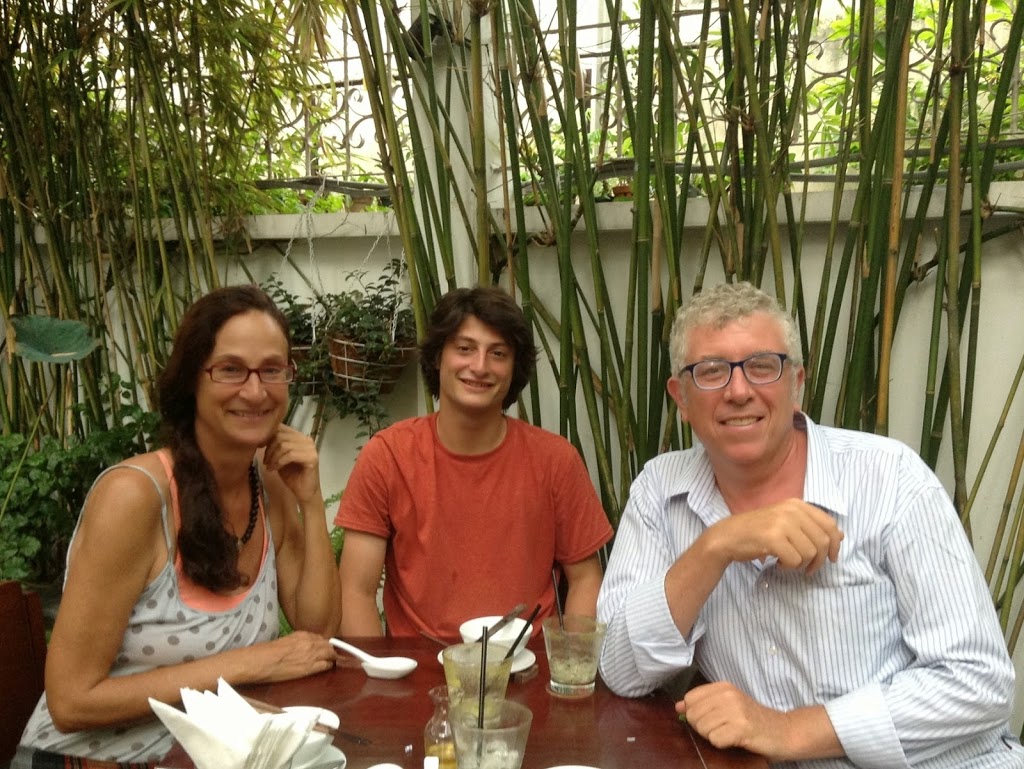 |
| An actual restaurant! We stumble upon “Hum” a lovely vegetarian restaurant. Yay, finally a real green salad (Peta). |
Goodbye Viet Nam ~ it has been an incredible 5 months in total, learning about and experiencing the culture, the people the food, the country. So many highlights, such an amazing life experience and adventure. Tam Viet!





























It sounds like you have had a wonderful 5 months in Vietnam. It’s interesting to hear your observations on the place and to see the photographs you have taken. Keep me posted as you travel through Thailand. Have fun.
Zwi!!! So glad you are now reading us and enjoying the blog. Thailand coming up soon. Hugs, P
Is it really goodbye or just ta ta for now, see you later?
Good bye for now, hopefully “see you later”.. But after five months in Viet Nam, we are ready to see and experience new lands!
Thank you once again for taking me with you. Always beautiful and interesting. Maybe I will have ban xeo today at the Song Long restaurant here in Cincinnati! I’m off to visit Alice in Brasil tomorrow. I wish you good times on the next leg of your journey. Abrazos de oso, Charles
Vietnam seem very two-wheel rich. What is the ratio of motorbikes to cars? Is there much pollution? How is the tanning?
80% motorbikes… The big cities (Hanoi, Saigon) have pollution, which would be way worse if everyone drove cars. Vietnamese value light skin and abhor the sun – that is why they cover up completely during the day.. hats, face masks, sunglasses, gloves, socks (with flip flops) even sweatshirts in the heat of the day. Anything to prevent tanning. In the early morning hours and at dusk, Vietnamese will head to the beach. In the evening, the women often wear shorts, but never during the day when the sun is out!